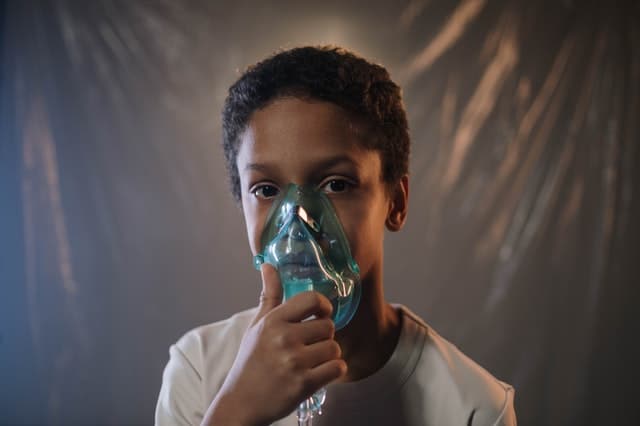What is an airway obstruction?
In the airway obstruction may be a blockage in any a part of the airway. if airway may be a complex system of tubes that conveys inhaled air from your nose and mouth into your lungs. An obstruction may partially or totally prevent air from stepping into your lungs.
Some airway obstructions are minor, while others are life-threatening emergencies that need immediate medical attention.
Types of airway obstructions
The types of airway obstructions are classified supported where the obstruction occurs and the way much it blocks.
- Upper airway obstructions occur within the area from your nose and lips to your larynx (voice box).
- Lower airway obstructions occur between your larynx and therefore the narrow passageways of your lungs.
- Partial airway obstructions allow some air to pass. you’ll still breathe with a partial airway obstruction, but it’s difficult.
- Complete airway obstructions don’t allow any air to pass. You can’t breathe if you’ve got an entire airway obstruction.
- Acute airway obstructions are blockages that occur quickly. Choking on a far off object is an example of an acute airway obstruction.
- Chronic airway obstructions occur two ways: by blockages that take an extended time to develop or by blockages that last for an extended time.
Airway Obstructions Recognition
- Features of hypoxia such as grey-blue tinge to the lips, earlobes and nailbeds (cyanosis)
- Difficulty speaking and breathing.
- Noisy breathing.
- Red, puffy face.
- Signs of distress from the casualty, who may point to the throat or grasp the neck.
- Flaring of the nostrils.
- A persistent cough.
The airway may be obstructed externally or internally, for example, by an object that is stuck at the back of the throat The main causes of obstruction are:
- Inhalation of an object, such as food;
- Blockage by the tongue, blood or vomit while a casualty is unconscious.
- Internal swelling of the throat occurring with burns, scalds, stings or anaphylaxis;
- Injuries to the face or Jaw;
- An asthma attack in which the small airways in the lungs constrict.
- External pressure on the neck. as in hanging or strangulation;
- Peanuts, which can swell up when in contact with body fluids.
These pose a particular danger in young children because they can completely block the airway.
Airway obstruction requires prompt action, be prepared to give chest compressions and rescue breaths if the casualty stops breathing [The unconscious casualty.
The information on this page is appropriate for all causes of airway obstruction. but if you need detailed instructions for specific situations, refer to the relevant pages given below.
Your Aims
- To Remove obstruction
- To restore normal breathing
- To arrange removal to hospital
Caution:- If the casualty is unconscious, open the airway and check breathing. The unconscious casualty.

- Remove the obstruction if it is external or visible in the mouth.
- If the casualty is conscious and breathing normally, reassure him, but keep him under observation.
- Even if the casualty appears to have made a complete recovery, call 999/112 for emergency help. Monitor and record his vital signs -level of response, breathing and pulse until help arrives.
HANGING AND STRANGULATION
Recognition
- A constricting article around the neck.
- Marks around the casualty’s neck.
- Rapid, difficult breathing: impaired consciousness: grey-blue skin (cyanosis).
- Congestion of the face. with prominent veins and, possibly, tiny red spots on the face or on the whites of the eyes.
Your Aims
- To Remove obstruction
- To restore normal breathing
- To arrange removal to hospital
Caution
If pressure is exerted on the outside of the neck, the airway is squeezed and the flow of air to the lungs is cut off. The main causes of such pressure are:
- Hanging – suspension of the body by a noose around the neck.
- Strangulation – constriction or squeezing around the neck or throat
Sometimes, hanging or strangulation may occur accidentally-for example, by ties or clothing becoming caught in machinery. Hanging may cause a broken neck for this reason, a casualty in this situation must be handled extremely carefully.

- Quickly remove any construction from around the casualty’s neck.
- If the casualty is hanging, support the body while you relieve the constriction. Be aware that the body will be very heavy if he is unconscious.
- If conscious, help the casualty to lie down while supporting his head and neck.
- Call 999/112 for emergency help
Prevention of an airway obstruction
Many types of airway obstructions are often prevented. Reduce your risk by doing the following:
- Avoid drinking tons of alcohol before eating.
- Eat small bites of food.
- Eat slowly.
- Supervise young children when eating.
- Chew thoroughly before swallowing.
- Make sure your dentures fit properly.
- Keep small objects faraway from children.
- Don’t smoke.
- Visit your doctor regularly if you’ve got a condition which will cause a chronic airway obstruction.

